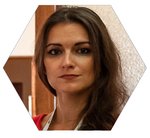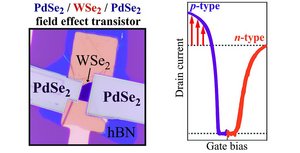Priv. Doz. Dr. Aleksandar Matkovic
Senior Scientist
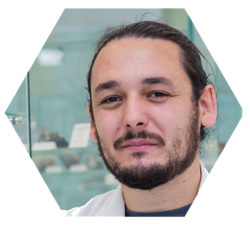
Bio:
Dr Matkovic finished his PhD in 2015 at the University of Belgrade, on the topic of optical properties of graphene. After a postdoc at Texas A&M at Qatar, he joined MUL at the Institute of Physics.
Fellowships, Projects and awards:
2017 Lise Meitner Fellowship by the FWF on the topic of guided self-assembly on 2D materials.
2019 awarded a Joint Bilateral project ( 4 years duration) with Tomsk Polytechnics on the topic on 2D-nanoribbon fabrication.
In 2020 FWF START prize on magnetic 2D materials,
2022 an ERC Starting grant on the topic of 2D ferric insulators.
Since 2020, he is working as a Senior Scientist and a group leader (Matkovic's Lab) at MUL., and is an active member of the ÖAW Young Academy.
Our research interests are mostly interconnecting between the fields of materials science, solid state physics, and nanoelectronics; focusing on experiments and device fabrication. The core of our research rests in two-dimensional (2D) materials and hybrid mixed-dimensional van der Waals heterostructures. We are stirred by nature, as by self-assembly processes seen in biological systems and complex yet pristine crystal structures (minerals) which elude synthesis or even prediction by the state‑of‑the‑art techniques. Inspired by such natural systems, we seek novel fabrication concepts based on self‑assembly and self‑alignment processes, 2D minerals, and new nanotechnology device concepts in the fields of nanoelectronics, plasmonics, and neuromorphic/synaptic electronics. |
Gennadiy Murastov, Awais Aslam, Simon Leitner, Aleksandar Matkovic 2D Mat Lab
We report two-dimensional WSe2 field-effect transistors with multi-layer palladium diselenide (PdSe2) as a contact material. We demonstrate that PdSe2 contacts favour hole injection while preserving the ambipolar nature of the channel material. This consequently yields high-performance p-type WSe2 devices with PdSe2 van der Waals contacts. Further, we explore the tunability of the contact interface by selective laser alteration of the WSe2 under the contacts, enabling pinning of the threshold voltage to the valence band of WSe2, yielding pure p-type operation of the devices.
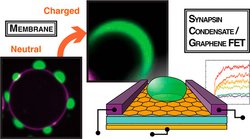
Electric Potential at the Interface of Membraneless Organelles Gauged by Graphene
Christian Hoffman, Gennadiy Murastov, Johannes Vincent Tromm, Muhammad Awais Aslam, Aleksandar Matkovic, Dragomir Milovanovic 2D_Mat_Lab
Eukaryotic cells contain membrane-bound and membrane-less organelles that are often in contact with each other. How the interface properties of membrane-less organelles regulate their interactions with membranes remains challenging to assess. Here, we employ graphene-based sensors to investigate the electrostatic properties of synapsin 1, a major synaptic phosphoprotein, either in a single phase or after undergoing phase separation to form synapsin condensates. Using these graphene-based sensors, we discover that synapsin condensates generate strong electrical responses that are otherwise absent when synapsin is present as a single phase. By introducing atomically thin dielectric barriers, we show that the electrical response originates in an electric double layer whose formation governs the interaction between synapsin condensates and graphene. Our data indicate that the interface properties of the same protein are substantially different when the protein is in a single phase versus within a biomolecular condensate, unraveling that condensates can harbor ion potential differences at their interface.
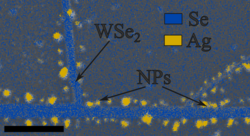
Gennadiy Murastov Muhammad Awais Aslam, Aleksandar Matkovic 2D Mat_Lab
Combining metallic nanoparticles and 2D semiconductors is a promising pathway to tailor hybrid mixed-dimentional plasmonic systems. However, current research focuses on either stacking nanopartiles on 2D layers or vice versa, commonly compromising electronic properties of the 2D materials due to perturbation of its basal plane. Here, we report a direct one-step controllable growth of silver nanoparticles along tungsten diselenide nanoribbon edges via edge-specific on-surface photochemistry for boosting light-matter coupling effect, optoelectronic response, and improving photocatalytic performance.
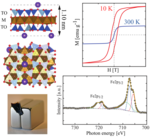
Probing Magnetic Ordering in Air Stable Iron-Rich Van der Waals Minerals
Muhammad Zubair Khan Oleg E. Peil Muhammad Awais Aslam Johann G. Raith 2DMat_Lab
2D Phyllosilicates bridge the gap between nanotechnology and mineralogy, revealing a novel class of 2D magnetic insulators. These minerals can incorporate substantial amount of local magnetic moment bearing ions with ambient stability. This paper demonstrates the relation between their structure and magnetic properties, offering insights into achieving higher critical ordering temperatures through oxidation state engineering.






